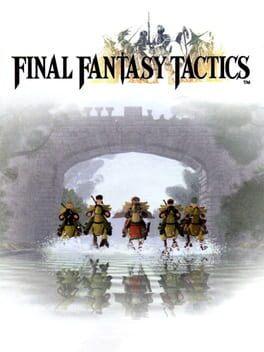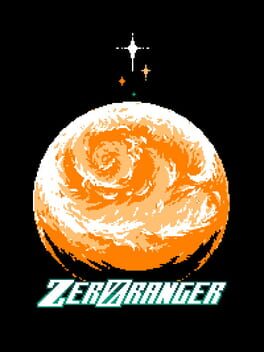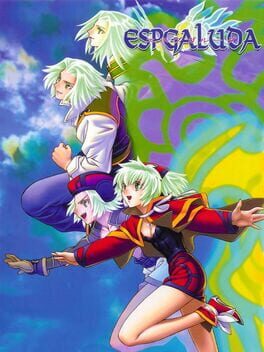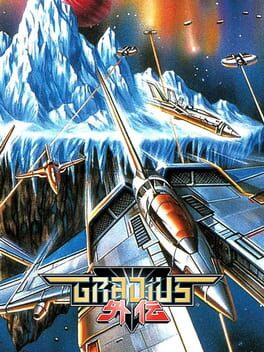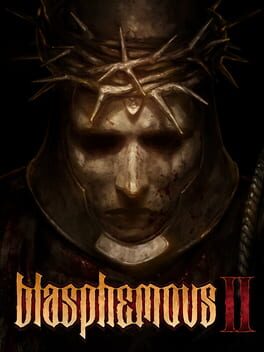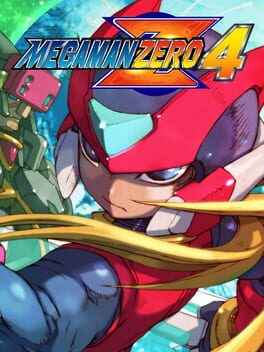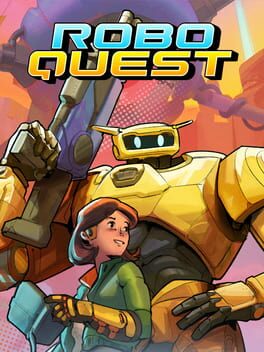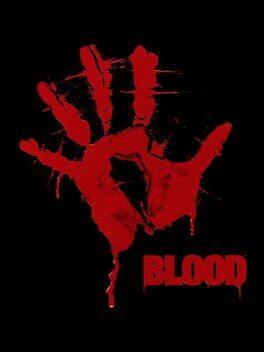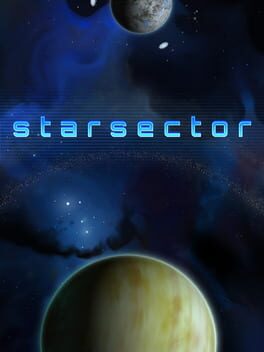Juoh
2022
Really love the atmosphere in this one and although the initially satisfying combat remains pretty one note throughout like most souls-like games, the amped up spectacle of the fights, especially bosses, helps keep things fresh and compelling. Unfortunately fails to justify its open world structure mechanically so it's a slog in that regard.
1998
Cool concept, the controls take some time getting used to but once you do it's satisfying. Unfortunately there's an unpolished feeling that permeates the experience, for one the stages are sleep-inducing with a lot of dead time, the difficulty curve for them barely move I feel like and when you die it's usually because you got shotgunned out of nowhere. That fact is contrasted with the bosses, although they are the highlight they are very overtuned compared to the stages that precede them, cranking up the difficulty to the max which creates an annoying whiplash. Past the second stage, a lot of their attacks have Psikyo-like shotgun patterns, nothing wrong with that initially except there's a confounding lack of audio cues for those (and a lot of patterns in general), it's very hard to avoid them through visual cues alone as you're already busy dodging the other slower patterns so you end up getting surprise blasted by the very fast bullets a lot of the time which is frustrating.
It's definitely a fun game and one I'd consider a hidden gem, too bad it's marred by the annoying aspects I mentioned.
It's definitely a fun game and one I'd consider a hidden gem, too bad it's marred by the annoying aspects I mentioned.
I'm a big fan of action games, in fact that's about the only type of game I really enjoy playing whereas I can't for the life of me get into RPGs. Yet I adore Final Fantasy Tactics and its clones. There's a reason for that that I noticed right away and it's Final Fantasy Tactics being an action game in tactics form. In fact there isn't much tactics going on in FFT, 99% of the time you'll give orders based on instincts and feeling rather than thought. There's a real tactile quality to FFT and it comes from multiple sources: the aesthetics, the small maps and rosters, the brutal "kill or be killed" approach to combat and its overall flow, the powerful spells and abilities, the customization and the grounded and gritty narrative elements.
Where other TRPGs put a stronger emphasis on puzzle-oriented scenarios, FFT likes getting into the thick of it and channel the pugilistic qualities of the battles it illustrates, it's very compelling in that regard, and while it is a simpler and more straightforward game compared to many other TRPGs of that era, I think it works to its advantage. To me it does anyway.
Where other TRPGs put a stronger emphasis on puzzle-oriented scenarios, FFT likes getting into the thick of it and channel the pugilistic qualities of the battles it illustrates, it's very compelling in that regard, and while it is a simpler and more straightforward game compared to many other TRPGs of that era, I think it works to its advantage. To me it does anyway.
2018
2005
2003
1997
Design so precise everything from top to bottom is imbued with the game's overall structure; every action the player does, every choice they make and every accomplishment they revel in is electrifying. Only the "Option" power-up threatens that equilibrium, thankfully the Gradius games know that full well and often subvert the player's rise in power. Awesome graphics, awesome music, a must-play.
2023
It doesn't reach Hollow Knight's highs, nothing does, but it's structurally more enjoyable to play. This is pretty much a great synthesis of Hollow Knight's enthralling moment to moment gameplay with an Igavania's pacing, flow and rhythm; the action in this sizzles and crackles on every level it's really beautiful to experience. Some balance issues and undercooked ideas aside, this is my personal favorite Metroidvania, that is until Silksong finally comes out and hopefully remedies Hollow Knight's glaring pacing issues.
2005
My favorite Mega Man Zero game. The toned-down difficulty really does wonders, the levels are more distinct and enjoyable to go through instead of being annoying exercises in frustration, most boss fights don't devolve into Don Frye vs Yoshihiro Takayama and have fun patterns to weave through with the cherry on top being the pseudo blue mage mechanic, Zero Knuckle, that's very fun to experiment with. I'm not the biggest Mega Man fan to say the least as I've always found the large majority of those games to be annoying and plain unfun to play, but, save for some frustrating portions in typical Mega Man fashion, Mega Man Zero 4 is a game I enjoy playing and replaying.
2020
Slick and polished gunplay that feels good to indulge in. It's very easy to get lost in the zone while playing this game. It unfortunately falls prey to the infamous FPS door issue™, meaning there's no reason to fully enter an arena and get into the fray when you can get rid of the enemies much safer standing at the arenas' entrance. It's a known issue a lot of FPS games have, but it's particularly egregious in Roboquest because the arenas themselves are very small with not a lot of mobility options, and the enemy patterns are almost all projectile-based which makes encounters very chaotic past the early game. So playing fair by entering the arenas means you'll take more damage than necessary 90% of the time, the one advantage of going in is to pick up health shards when enemies die as those disappear quickly. This is a viable risk/reward option early on, but past the early game, even though the shards scale to your progression, enemies deal too much damage for it to be worth it and other than this mechanic Roboquest is very stingy with health drops. Some rooms lock you in an arena and force you to clear enough enemies in order to continue, those only serve to exacerbate the issues I mentioned above as the arenas are way too small, the enemies way too spammy and the damage you receive too punishing for those encounters to be enjoyable.
It's a fun time overall but gets repetitive quickly, there's also the odd addition of gimmick attacks, one that reverses your controls when you get hit and another one that requires you to do a QTE if you want to get out of a stun more quickly which are annoying and feel out of place. I also wish the RNG elements were more prominent and had more impact on the gameplay, and that the meta-progression elements weren't as stifling as they are. It knew what it wanted to be at least and delivered for the most part, I can respect that.
It's a fun time overall but gets repetitive quickly, there's also the odd addition of gimmick attacks, one that reverses your controls when you get hit and another one that requires you to do a QTE if you want to get out of a stun more quickly which are annoying and feel out of place. I also wish the RNG elements were more prominent and had more impact on the gameplay, and that the meta-progression elements weren't as stifling as they are. It knew what it wanted to be at least and delivered for the most part, I can respect that.
1997
Memorization-heavy peekaboo shooting is fun when the level design lends itself to that playstyle; otherwise it's a slog. When people talk about Blood, they talk about the cultists but never about the other enemies. There's a reason for that: they might as well not exist at all since strafing and/or crouching completely nullifies their (extremely slow and telegraphed) attacks. When the only credible threat in your roster is an overtuned one then you rely on the level design to do all the heavy lifting to try and shake things up in the long run.
For episode 1 and most of episode 2, it works. Mainly because the levels are very well-designed, pretty short as well as self-contained and thankfully the weapons in your arsenal encourage that kind of peekaboo shooting playstyle I mentioned earlier, Episode 3 onward is where things start to crumble. What once was the source of exhilaration becomes the source of frustration and eventually boredom. The levels become bigger so the crazy hitscanners more annoying to deal with, the other walking non-threats become tankier and come in greater numbers making them a slog to dispatch (Cheogh and Shial take the whole damn cake). Some levels are entirely devoid of cultists, those only serve to exacerbate Blood's main flaw as they are very much "nothing" levels as they lack any kind of challenge.
It's a shame because I love everything else about Blood but, due to an obvious lack of playtesting, the enemy balancing is so bad it ends up souring the whole dish. I played on Well Done because anything lower than that and the cultists become non-threatening too so not much point to it in my opinion.
For episode 1 and most of episode 2, it works. Mainly because the levels are very well-designed, pretty short as well as self-contained and thankfully the weapons in your arsenal encourage that kind of peekaboo shooting playstyle I mentioned earlier, Episode 3 onward is where things start to crumble. What once was the source of exhilaration becomes the source of frustration and eventually boredom. The levels become bigger so the crazy hitscanners more annoying to deal with, the other walking non-threats become tankier and come in greater numbers making them a slog to dispatch (Cheogh and Shial take the whole damn cake). Some levels are entirely devoid of cultists, those only serve to exacerbate Blood's main flaw as they are very much "nothing" levels as they lack any kind of challenge.
It's a shame because I love everything else about Blood but, due to an obvious lack of playtesting, the enemy balancing is so bad it ends up souring the whole dish. I played on Well Done because anything lower than that and the cultists become non-threatening too so not much point to it in my opinion.
2022
This is what happens when you combine Quake level design and movement with Serious Sam enemy density. Quake is all about economical and precise enemy placement coupled with tight and narrow level design to get the player into as many interesting situations as it can by shuffling the level layouts, enemies and resources around while keeping the action going and flowing. Herald of Havoc is only concerned with throwing countless enemies at the player with some of them having chaotic danmaku-like patterns.
The action in Quake pulses with rhythmic qualities, in Herald of Havoc it's just unintelligible noise.
The action in Quake pulses with rhythmic qualities, in Herald of Havoc it's just unintelligible noise.
2013
Combat is the crux of the overworld interactions, the flux system is the crux of combat. Starsector's greatest achievement is in how it is able to provide satisfying friction to the gameplay in every facet of its design. The secret to that is the incorporation of the sandbox elements in every pore through extreme dynamism. In short: the hands-off elements feed into the hands-on ones and vice versa which provides some kind of friction to every action the player does. What this means for the player is constant reevaluation of their choices and decisions if they want to succeed in whatever goal they set for themselves. It's incredibly immersive in that regard, reaching heights i've never seen reached before in a video game. Add to that the clever inclusion of arcadey abstractions where it counts in a genre that usually screams realism and you've got yourself a winner.
One of the greatest and rawest games ever made without the shadow of the doubt. The fact that everything gameplay related was basically made by one dude is insane to me.
One of the greatest and rawest games ever made without the shadow of the doubt. The fact that everything gameplay related was basically made by one dude is insane to me.
2017


